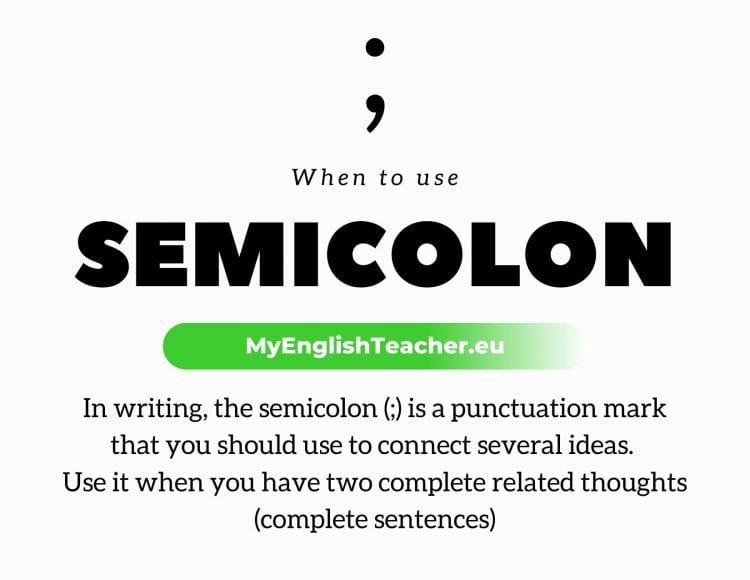
How do you know when to use a Semicolon?
In writing, the semicolon (;) is a punctuation mark that you should use to connect several ideas. Use it when you have two complete related thoughts (complete sentences). That is when to use a semicolon.
Because of how related they are, it is more appropriate to write them as one sentence rather than breaking them up into two.
However, you can always break up a sentence with a semicolon into two separate sentences, without adding any additional words. If you do that, it should make grammatical sense.
This is best explained by looking at some semicolon examples:
- I really love eating brownies; I am pretty sure that I am addicted to chocolate.
- The weather is getting hotter and hotter now; you should probably start preparing to change your wardrobe and spend some more time outside.
In both of these examples, the two halves of the sentence are complete thoughts. I can replace the semicolon with a period, and both the new sentences would make sense without any edits. However, I still chose to put them together.
The reason for that is the two ideas from the sentences are linked. I am addicted to chocolate, so it makes sense that I would love eating brownies. Because the weather is getting hotter, you should start changing your wardrobe and spending more time outside.
One of these two sentences gives more context for the other, and having those details helps you better understand that idea. Neither sentence is necessary, but they are good together because they help you understand the full picture.
TL; DR: Use semicolons when you have two complete thoughts that are related and give more context for one another.
Read more:
Quotation Marks – Question Mark
What does a Semicolon mean in grammar?
A semicolon is used when you join two related, complete thoughts. It is usually used when you have two complete sentences about the same topic, and one causes the other.
You can write them as separate sentences, but putting them together with a semicolon shows that they are connected.
Semicolon example:
- Most people are lazy; if you put in just one extra hour of effort, you can beat the majority of your competitors.
In this case, we have two distinct sentences. Each could stand on its own, and would be grammatically correct.
However, they are clearly very closely linked. It is because most people are lazy that you can beat them with some extra effort.
As a result, since these two ideas are interconnected, you can join them with a semicolon.


























